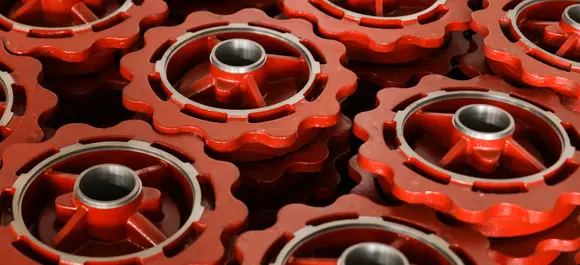Mobile:+86-311-808-126-83
Email:info@ydcastings.com
sand casting tools
Sand Casting Tools Essential Equipment for Foundry Processes
Sand casting is one of the oldest and most widely used metal casting processes. It involves creating a mold from sand to shape molten metal, which then solidifies into a desired form. The efficiency and quality of sand casting largely depend on the right tools and equipment used throughout the process. This article discusses the essential tools necessary for successful sand casting operations.
1. Pattern Tools Pattern tools are crucial for creating the mold. These are replicas of the final product that help form the cavity into which molten metal is poured. Patterns can be made from various materials, such as wood, metal, or plastic, depending on the volume of production and the complexity of shapes. The pattern must be slightly larger than the final product to account for metal shrinkage during cooling. Additionally, patterns often feature cores for hollow sections and may include mechanisms to help remove them from the sand.
Sand Casting Tools Essential Equipment for Foundry Processes
3. Sand Rammers and Compaction Tools To create a stable mold that can support the liquid metal, sand must be compacted thoroughly around the pattern. Sand rammers and compaction tools are used for this purpose. Rammers are typically handheld devices that apply pressure to the sand, ensuring it is tightly packed and free from voids. Proper compaction is essential as it affects the mold's strength and the final product's surface finish.
sand casting tools

4. Core Making Tools Cores are often used in sand casting to create hollow sections in the final product. Core-making tools include core boxes, which are used to form the shapes of the cores from sand. Cores must be well-designed to withstand the pouring of molten metal without collapsing. Additionally, core-setting tools are necessary to ensure that the core is placed correctly within the mold before the metal is poured.
5. Molding Sand Materials The quality of the molding sand is vital for successful sand casting. Standard molding sand consists of silica, clay, and water. However, additives can be introduced to enhance specific properties, such as strength, thermal stability, and cohesiveness. Tools for mixing and testing sand composition will ensure that the material used in molding will provide consistent and reliable results.
6. Pouring Equipment Once the mold is prepared, the next step is pouring the molten metal. Pouring tools include ladles and pouring basins, which help transfer molten metal from its source into the mold. Ladles must have sufficient capacity and heat resistance to handle the molten material safely. Furthermore, pouring equipment should facilitate an even and controlled pour to minimize defects in the final product.
7. Cooling and Finishing Tools After the metal solidifies, it is essential to have tools for removing the sand mold, as well as equipment for cooling and finishing the cast products. This includes chisels, hammers, and vibratory finishing machines to clean up the final product, ensuring it meets required specifications.
Conclusion Investing in the right sand casting tools is essential for streamlining the casting process and achieving high-quality results. Understanding the role of each tool and maintaining them well contributes to an efficient workflow and successful operations in metal casting. Whether for hobbyists or large-scale production, selecting the appropriate tools is the cornerstone of effective sand casting practices.
-
Why Should You Invest in Superior Pump Castings for Your Equipment?NewsJun.09,2025
-
Unlock Performance Potential with Stainless Impellers and Aluminum End CapsNewsJun.09,2025
-
Revolutionize Your Machinery with Superior Cast Iron and Aluminum ComponentsNewsJun.09,2025
-
Revolutionize Fluid Dynamics with Premium Pump ComponentsNewsJun.09,2025
-
Optimizing Industrial Systems with Essential Valve ComponentsNewsJun.09,2025
-
Elevate Grid Efficiency with High-Precision Power CastingsNewsJun.09,2025











